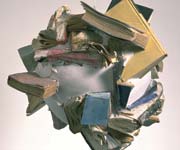
John Latham: Cluster No. 11, 1992
Chewing Time
John Latham is an art hero because in 1966 he instigated an event called Still and Chew that required several participants to bite off, masticate, and then spit out pages from Clement Greenberg’s Art and Culture. The results were put in a flask and returned to the library from which the artist had borrowed that influential, devilish collection of essays. Because of this, Latham was fired from his teaching job at the prestigious St. Martin’s School of Art in London, and as far as I know he never taught again. “Time-Base and the Universe,” a survey of the work of the legendary Latham (born 1921) now at P.S. 1 in Long Island City until January 8, comes after that British artist’s death last New Year’s Day.
I had to go to MoMA to see the documentation for Still and Chew in a case on the 4th floor. It’s in a room with works by Marcel Broodthaers (his not very interesting egg-shell cabinet); John Baldessari’s dumb What Is Painting?; and the nearly forgotten Paul Thek’s lump of fake meat, girded by a paranoid text. The Latham work would have been better served by being placed in a room with a Morris Louis or any other of the post-painterly painters Uncle Clem was hawking at the time.
I don’t remember a posting at P.S. 1 to the effect that the Still and Chew documentation was far across the East River, whereas at MoMA there’s a wall text announcing the show at P.S. 1. I guess the MoMA work could not be moved. It contains a small leather case the size one might have for a chess set, but containing the remains of the aforementioned book. The vitrine also displays the library overdue notice, little bottles of chemicals, a vial that might have once contained the book spew, and other documentation.
Thus I learned that legends are not facts. I had thought that Latham had done all the masticating himself. Not so. He called for a party and was assisted by his then-student, sculptor Barry Flanagan (he of the dancing rabbits), and others. Only one-third of Greenberg’s screed was destroyed and reduced to goo. Then too, not one to leave well enough alone, Latham added sulfuric acid and then yeast!
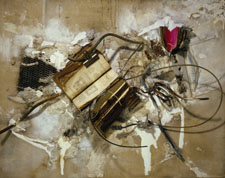
Latham, Philosophy and the Practice of, 1960
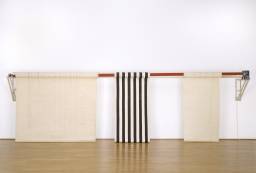
Latham, Time Base Roller, 1972
Time Squared
Except for the spray-paintings (reportedly the first ever) and the impressive moving painting called Time-Base Roller (1972), books were Latham’s signature material. He owned the idea of using books in assemblage; books as a sculpture material. Books are powerful. Latham’s last work, God Is Great (#4), poses the New Testament, the Torah, and the Koran on a huge bed of broken glass. What was he trying to tell us? Why was this piece banned by the Tate last year?
Some of Latham’s works using books — affixed to canvas or glass, or even the hanging “Clusters” that incorporate “fragments” of books — suggest Kurt Schwitters or contemporaneous works by Rauschenberg or Daniel Spoerri who glued down the remains of dinners. Yet, if you look a little deeper, you see that Latham’s books are badgering, not formal. His books are better expressions of what he means by “flat time” than his impenetrable interviews or written statements: “Flat Time (FT) is a cosmological proposition deriving from the 20th Century convergence of trajectories of art, science and theology at a dimensionless point….”
Several times now I have poked at time by talking about art history, proposing that instead of an ever-upward, one-line trajectory — from cave paintings to Jeff Koons — or even a spiral (what goes around comes around), other pictures of time are worth a look. Even an hourglass won’t do.
I show my befuddled or suddenly illuminated audiences a double helix; let one strand stand for abstraction and the other for representation. And then move on to a braid. Three strands; five. Instead of one line of artistic development or evolution, we have several simultaneous ones; and what’s more, they pass over and under one another. They create a knot. That knot is the present. The secret is that every knot is a braid; ask your mathematician friends. Turning a knot back into a braid is how we can unravel the apparent incoherent pluralism of the present. And then I end with a Celtic/Islamic braid in which all strands turn back on themselves. In other words, we evolve to no time at all.
I wonder if my time knot/braid is the same as Latham’s notion of flat time. His flat time is very close to Nothingness. My braid that loops back on itself is Nothingness too.
Is it accidental that the notion of art history, literary history, and history itself that underpins every essay in Art and Culture is linear? One strand is all, or nothing at all. Is that why Latham thought it necessary to chew? Or was this just the local politics of Greenbergism and anti-Greenbergism at that time when Clem was trying to sew up the British art world in the way he had sewn up Boston, Syracuse, Toronto and other islands of culture.
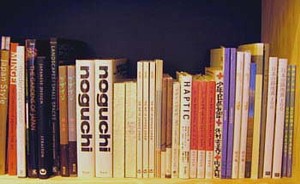
All Booked Up
Time has changed the meaning of books. We look at Latham’s battered books, and we no longer think of Nazi book-burnings or even of Ray Bradbury’s Fahrenheit 451. We project ourselves into the near future, when books are gone. Why waste all that paper when we have the Internet? Newspapers in print are surely already on the way out. No more ink-stained hands.
I fully gave up the printed-on-paper New York Times last year. First I read it online just from Monday through Thursday, plus Saturday, thinking I still needed Fridays art reviews in a newsprint format. The Sunday Times was a ritual since my youth. Yet I soon found I really didn’t need to actually handle Friday’s Times. And then when the Times dropped its weekly TV listing, so there went Sunday’s Times, too. Background: My father read five newspapers every day. In the past, I preferred writing for weekly newspapers like the Voice and then the Soho News, as opposed to the liturginous magazines.
I still haven’t gotten used to reading books online, but guess I’ll get used to that, too. Currently there are six books with my name on their spines. I have at least 5,000 books in my library, mostly about art of one sort or another. When there was no room in my tiny East Village apartment, I rented storage space on the West Side. I had to take a cross-town bus to retrieve a book. Now most of my books are stored on Long Island and the bus has been replaced by the L.I.R.R. Try as I may, I cannot give away or sell my books. They are me. Besides, I swear by the book-nut’s rule: if you dispose of a book, you will inevitably need it within three months. And of course it will be out of print.
A book is yet another picture of time and space. A book can also have wormholes. You can skip around in a book. Is that what Latham was trying to say?

Miami Beach Redux
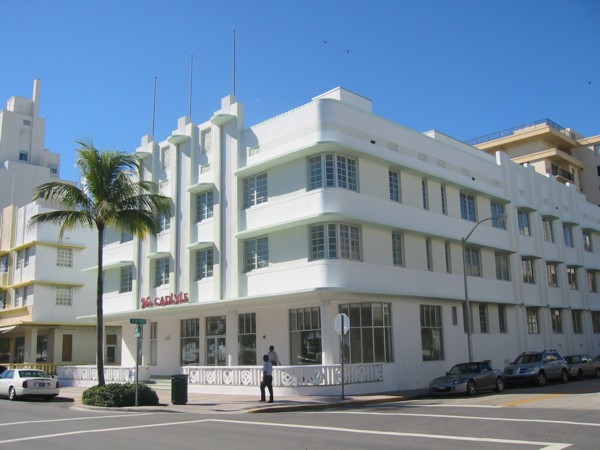
And now, with one leap sideways in time, along with one leap back, we come to Miami Beach, where I was last week, for the opening days of the Art Basel Miami Beach fair. In 1981 I wrote a piece for Art in America about the Deco hotels that were in the process of being preserved. Now the Cardoza, the Carlyle, the Victor and the rest look as spiffy in real life as my printed photographs made them look way back then. Photos always edit out the dust and grunge.
Looking forward, further north near the convention center, hotel prices tripled this year. Yet because of the weak dollar, a Miami Beach art-shopping binge is still a bargain for Europeans. For Americans, art now looks like a better investment than real estate. At a time when new art stars are scarce, contemporary art on the secondary market looks good. Plus, the European galleries seem to be unloading their stock of minimalist masters.
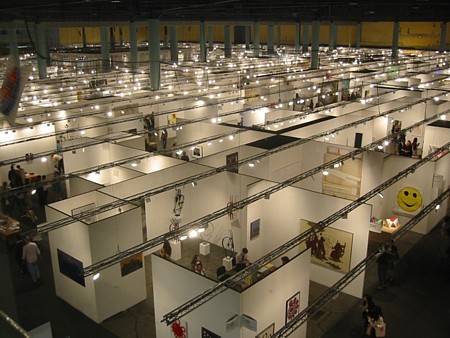
The main event in the Convention Center laid out what keeps art galleries in business: inventory. I did indeed see the $30 million Picasso being offered, and the booth of spectacular Barbara Krugers that reportedly turned over a few seconds after the gates were opened for the V.I.P. preview. There was also a honey of a Richard Serra prop-piece: just a square of metal balanced on one point against a corner. Turn a corner and you bumped into Dennis Hopper or Keanu Reeves. Not bad, for what is essentially a convention hall full of back rooms where, through gallerist intermediaries, those who want to sell their treasures while the art market is high meet those who want to gamble that it will still go higher.
Plus, Florida does not charge sales tax. You save $2,512, 500 on the Picasso alone; if you don’t ship it home to New York City, where a Use Tax of the same amount applies. Thus, buying a condo on the beach seems cost-effective; prices are sinking. Shipping your Chelsea or your New York auction purchases to your Miami Beach address eludes sales tax too. So according to the High Life system of accounting (first principle: the money saved on bargain shopping when you travel should cover the costs of travel), enough tax-free art purchases in New York or at Art Basel Miami Beach will pay for your beachfront condo, and the balmy winter weather is free.
Secondary market stuff may have looked good, but NADA (New Art Dealers Alliance), one of the satellite presentations featuring unknowns, proved disappointing — as did the Art Nova displays of new art at the Convention Hall. My theory is that the prices were not yet high enough.
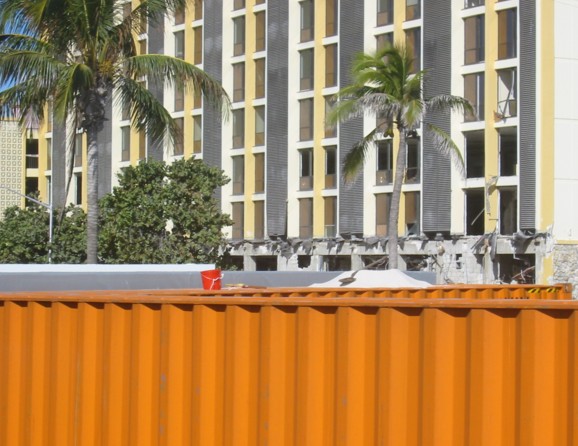
Aaron Young, Untitled, 2006 (view of shipping container roof)
“Positions,” shown in shipping containers on the beach, was much more entertaining. There I saw the best new work in Miami: New Yorker Aaron Young’s “hourglass.” He had hired laborers for $12 an hour to sweep pure white sand into four holes, one at a time, in the roof of the Harris Lieberman Gallery container. Opening night, a beautiful, pure pyramid of sand had already formed at the back of the container. Approaching it, above the din of young artists who looked and sounded like young artists everywhere, and above the thump of Peaches stomping and shaking their peaches on the beach, you could hear footsteps, brooms and shovels above, calling attention to the visible and invisible day-labor situation. Time is sweat.
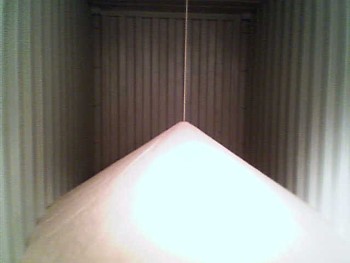
Aaron Young, Untitled, 2006 (shipping container interior with sand)
FOR AN E-MAILED AUTOMATIC ARTOPIA ALERTWHEN THERE IS A NEW ENTRY CONTACT: perreault@aol.com
